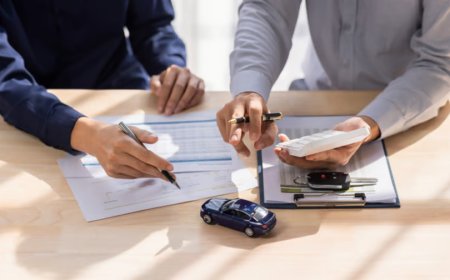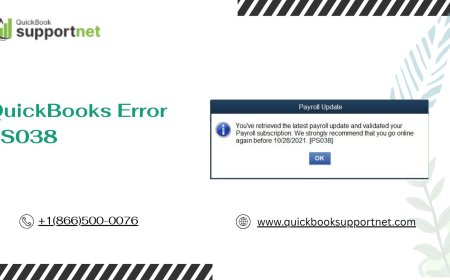How To Attend Jax Jazz Fest Free Stages
How to Attend Jax Jazz Fest Free Stages The Jax Jazz Fest is one of the most anticipated annual music events in Jacksonville, Florida, drawing thousands of jazz enthusiasts, casual listeners, and cultural explorers each year. While the festival features premium ticketed stages with internationally renowned artists, its true magic lies in the free stages scattered across the downtown waterfront and
How to Attend Jax Jazz Fest Free Stages
The Jax Jazz Fest is one of the most anticipated annual music events in Jacksonville, Florida, drawing thousands of jazz enthusiasts, casual listeners, and cultural explorers each year. While the festival features premium ticketed stages with internationally renowned artists, its true magic lies in the free stages scattered across the downtown waterfront and surrounding neighborhoods. These open-air performances offer an authentic, immersive experience where music flows freely through the streets, connecting communities and celebrating the rich heritage of jazz in its most accessible form.
Attending the free stages of Jax Jazz Fest isn’t just about saving money—it’s about embracing the soul of the festival. Unlike ticketed venues, the free stages provide an unfiltered, spontaneous atmosphere where local talent, emerging artists, and regional legends share the spotlight with the same passion and energy as headliners. For first-time visitors, tourists, students, families, and budget-conscious music lovers, knowing how to navigate, plan for, and maximize your experience at these free stages can transform a simple outing into a deeply memorable cultural journey.
This guide is designed to equip you with everything you need to know to attend the Jax Jazz Fest free stages with confidence. From strategic planning and timing to on-site navigation and etiquette, we’ll walk you through every step—backed by real insights, practical tools, and firsthand examples. Whether you’re a seasoned festival-goer or attending your first jazz event, this tutorial will help you enjoy the full richness of Jax Jazz Fest without spending a dime on admission.
Step-by-Step Guide
1. Research the Official Schedule Well in Advance
The foundation of a successful free stages experience begins long before you leave your home. The Jax Jazz Fest official website publishes a detailed schedule approximately six to eight weeks before the event. This schedule includes performance times, artist names, and locations for every stage—both ticketed and free.
Begin by visiting the official Jax Jazz Fest website and navigating to the “Schedule” or “Lineup” section. Filter the results to show only “Free Stages” or “Community Stages.” These are typically labeled as such and are often located in public parks, plazas, and along the St. Johns River waterfront. Take note of:
- Performance start and end times
- Artist bios and musical styles
- Stage names and exact addresses
- Any special events tied to the stage (e.g., dance workshops, jam sessions)
Print or save a digital copy of the schedule to your phone. Many free stages are located in areas with limited cell service, so having offline access is critical. Use apps like Google Keep or Apple Notes to organize your must-see acts by day and time.
2. Map Out Your Route and Transportation Options
The free stages of Jax Jazz Fest are spread across multiple locations, often several blocks apart. Walking is the most popular and rewarding way to experience the festival, but planning your route in advance prevents fatigue and missed performances.
Use Google Maps or Apple Maps to plot the locations of your target free stages. Set them as waypoints and calculate walking times between them. For example:
- Stage A: James Weldon Johnson Park (10:00 AM – 1:00 PM)
- Stage B: Riverwalk Plaza (1:30 PM – 4:30 PM)
- Stage C: The Cummer Museum Lawn (5:00 PM – 8:00 PM)
Consider the terrain. Some areas have uneven sidewalks or cobblestones, especially near historic districts. Wear comfortable, broken-in shoes. If you’re traveling with children, elderly companions, or mobility aids, check the festival’s accessibility map for ramps, elevators, and designated rest zones.
Public transit is available via Jacksonville Transportation Authority (JTA) buses, which offer extended hours during the festival. The “Festival Loop” bus route runs every 20 minutes between major free stages and parking hubs. Download the JTA app to track real-time bus locations. Bike parking is also available at most stages, and several bike-share stations are located downtown.
3. Arrive Early to Secure Prime Viewing Spots
While free stages don’t require tickets, they do attract large crowds—especially for popular local acts or weekend performances. Arriving early ensures you get a good view without being crammed at the back.
For midday sets (11 AM – 3 PM), aim to arrive 30 to 45 minutes before showtime. For evening sets (5 PM – 9 PM), arrive at least 60 minutes early. The earlier you arrive, the more likely you are to find:
- Flat, shaded areas under trees or canopies
- Seating on nearby steps or grassy slopes
- Proximity to food vendors and restrooms
Many attendees bring blankets or low-profile folding chairs (under 12 inches high). Check the festival’s rules—some stages prohibit chairs to maintain sightlines for others. If chairs are allowed, opt for lightweight, compact models that won’t obstruct views.
Pro tip: If you’re with a group, assign one person to hold space while others grab food or use the restroom. A folded jacket or small bag on the ground is often enough to reserve a spot.
4. Understand Stage Etiquette and Crowd Dynamics
Free stages thrive on community spirit, but they also require mutual respect. Unlike concert halls, there are no assigned seats, no barriers, and no ushers—so etiquette is self-regulated.
- Keep noise to a minimum during performances. Avoid loud conversations, phone ringtones, or playing music from personal devices.
- Respect personal space. Don’t push to the front if you arrive late. Look for gaps or ask politely if you can squeeze in.
- Photography is encouraged, but avoid using flash during intimate acoustic sets. Some artists request no recording—always follow posted signs or verbal cues from stage crew.
- Keep the area clean. Use designated trash and recycling bins. Many stages have volunteer “Green Ambassadors” who can direct you.
- Children are welcome, but supervise them closely. The festival is family-friendly, but crowded areas can be overwhelming for young kids.
Remember: The free stages are about shared joy. A smile, a nod, or a spontaneous dance can be just as meaningful as any ticketed performance.
5. Plan for Weather and Comfort
Jacksonville’s climate can be unpredictable, even in spring when the festival typically occurs. Be prepared for sun, wind, rain, or humidity.
Essential items to pack:
- Reusable water bottle (many stages have free water refill stations)
- Wide-brimmed hat and sunscreen (SPF 30+)
- Lightweight rain jacket or poncho (in case of sudden showers)
- Portable phone charger (power banks are allowed and recommended)
- Small fan or misting spray (for hot days)
- Light snack (granola bars, fruit, nuts) to tide you over between meals
Dress in layers. Mornings can be cool, afternoons hot, and evenings breezy. Opt for breathable fabrics like cotton or linen. Avoid heavy denim or dark colors that trap heat.
Check the weather forecast the night before and the morning of the festival. If heavy rain is predicted, some outdoor stages may be relocated indoors to nearby community centers. The official app and social media channels will announce changes in real time.
6. Explore the Free Stage Ecosystem
Don’t limit yourself to one or two stages. The true beauty of Jax Jazz Fest lies in discovering hidden gems. Each free stage has its own vibe:
- James Weldon Johnson Park Stage: A historic hub for traditional New Orleans-style brass bands and gospel-infused jazz.
- Riverwalk Plaza: Features contemporary jazz, fusion, and experimental acts with stunning river views.
- The Cummer Museum Lawn: Offers a more intimate, seated setting with acoustic trios and singer-songwriters.
- Welding Works Courtyard: A gritty, industrial-chic space popular with avant-garde and free jazz ensembles.
- St. Johns River Ferry Dock: A floating stage accessible only by ferry—unique and rarely crowded.
Use the festival map to identify lesser-known stages. Often, these are the most rewarding. A 2:00 PM set by a local piano duo on a quiet side street might become your favorite moment of the weekend.
7. Engage with the Artists and Community
One of the most underrated aspects of free stages is direct artist interaction. After sets, many musicians linger to chat, sign autographs, or even jam informally with attendees.
Bring a notebook or phone to jot down artist names, album titles, or social media handles. Follow them online—many free-stage performers release live recordings or announce future gigs on Instagram or Bandcamp.
Support local artists by purchasing merchandise at their tables. Even a $5 vinyl or patch helps sustain the scene. Many musicians rely on these sales more than festival stipends.
Strike up conversations with fellow attendees. You’ll often find fellow jazz lovers who’ve been coming for decades—and they’ll have stories, recommendations, and secrets you won’t find online.
8. Know When to Move On
It’s tempting to stay at one stage all day, especially if the music is great. But the festival is designed for movement. Set a timer or use your phone’s calendar to alert you 15 minutes before your next performance.
Factor in walking time. If Stage B is 10 minutes away and your next show starts at 4:00 PM, leave by 3:40 PM. Rushing creates stress; arriving early enhances enjoyment.
If you miss a set, don’t panic. Jazz is improvisational—no two performances are the same. You might stumble upon an impromptu jam session on a side alley or a surprise guest appearance. Stay open.
Best Practices
1. Prioritize Quality Over Quantity
It’s easy to fall into the trap of trying to see every act. But quality experiences trump quantity. Instead of rushing from stage to stage, pick 3–4 standout performances per day and give them your full attention. You’ll remember those moments far longer than a checklist of names.
2. Bring a Small, Lightweight Bag
Large backpacks and suitcases are discouraged for safety and space reasons. Use a crossbody bag, fanny pack, or small tote that holds only essentials: phone, wallet, keys, water, sunscreen, and a compact umbrella. Leave non-essentials at home or in your car.
3. Learn Basic Jazz Etiquette
Jazz is a conversational art form. Applause is typically reserved for the end of a complete piece—not between solos. If you’re unsure, watch the crowd. When the drummer gives a final cymbal crash and the bassist nods, that’s your cue to clap.
Whistling or shouting “Yeah!” during a solo is acceptable in some settings, especially at bluesy or gospel-infused sets, but avoid it during delicate ballads. Listen first, respond second.
4. Use the Festival App for Real-Time Updates
The official Jax Jazz Fest app (available on iOS and Android) provides live updates on:
- Stage delays or cancellations
- Weather-related relocations
- Emergency alerts
- Interactive maps with live crowd density indicators
Download it before you arrive. Enable notifications so you don’t miss critical changes.
5. Stay Hydrated and Nourished
Walking all day in Florida heat can lead to fatigue or heat exhaustion. Drink water consistently—even if you’re not thirsty. Many food vendors offer healthy options like grilled vegetables, black bean salads, and fresh fruit smoothies. Avoid excessive sugary drinks or alcohol, which can dehydrate you faster.
6. Leave Valuables Behind
Large crowds increase the risk of pickpocketing. Don’t bring expensive jewelry, large sums of cash, or unnecessary electronics. Use a money belt or secure pocket for essentials. If you must bring a camera, keep it slung across your body, not dangling.
7. Respect the Environment
Jax Jazz Fest is committed to sustainability. Use reusable containers, avoid single-use plastics, and dispose of waste properly. Many stages have compost bins for food scraps. Participating in this effort helps ensure the festival remains free and accessible for years to come.
8. Capture Memories, Not Just Photos
Put your phone down occasionally. Let the music move you. Close your eyes. Feel the rhythm in your chest. The most powerful moments at free stages aren’t the ones you document—they’re the ones you live.
Tools and Resources
Official Jax Jazz Fest Website
www.jaxjazzfest.org is your primary source for schedules, maps, artist bios, and policy updates. Bookmark it and check it daily in the week leading up to the event.
Jax Jazz Fest Mobile App
Available on the App Store and Google Play. Features include:
- Push notifications for stage changes
- Real-time crowd heat maps
- Artist playlists and streaming previews
- Interactive map with walking directions
- Volunteer and accessibility info
Google Maps + Offline Downloads
Download the downtown Jacksonville area for offline use. Mark all free stage locations as favorites. Enable walking directions and turn-by-turn navigation.
Spotify and Apple Music Playlists
Search for “Jax Jazz Fest 2024 Playlist” or browse curated playlists by past performers. Familiarizing yourself with the artists’ styles helps you appreciate their live sets more deeply.
Local Jazz Radio Stations
Before the festival, tune in to:
- WJCT 89.9 FM – Jacksonville’s NPR station with weekly jazz programs
- WJGL 96.9 FM – Features local jazz artists on weekend shows
Listening beforehand helps you recognize songs and styles on-site.
Community Forums and Social Media Groups
Join Facebook groups like “Jax Jazz Fest Enthusiasts” or Reddit’s r/Jacksonville. These communities share tips on best food trucks, hidden stages, and last-minute set changes. Many regulars post live updates during the event.
Free Public Wi-Fi Hotspots
Several downtown locations offer free public Wi-Fi, including:
- St. Johns County Public Library branches
- City of Jacksonville Parks & Rec centers
- Selected cafes near festival zones
Use these to check updates when your data runs low.
Local Transit App: JTA Ride
Download the JTA Ride app to track the Festival Loop bus, view schedules, and purchase day passes ($3). The app also shows real-time bus locations and estimated arrival times.
Weather Apps: AccuWeather and Windy
AccuWeather offers hyperlocal forecasts for downtown Jacksonville. Windy is excellent for tracking wind patterns, which affect outdoor sound quality and crowd comfort.
Music Discovery Tools: Shazam and SoundHound
Use these apps to identify songs you hear live. Many free-stage artists play covers or unreleased tracks—Shazam can help you find them later.
Real Examples
Example 1: The First-Time Attendee
Emma, a 22-year-old college student from Atlanta, attended Jax Jazz Fest for the first time in 2023. She planned to see only one free stage but ended up spending all three days exploring.
She used the official app to map out her route: James Weldon Johnson Park at 11 AM, Riverwalk Plaza at 2 PM, and the Cummer Museum Lawn at 6 PM. She arrived 45 minutes early each time, brought a lightweight blanket, and stayed hydrated with a refillable bottle.
At the Cummer Museum stage, she met a retired jazz drummer who introduced her to a local saxophonist playing an original composition. Emma recorded the song with Shazam, later found it on Bandcamp, and now follows the artist online. She didn’t spend a dollar on admission—and called it the most authentic musical experience of her life.
Example 2: The Family Outing
The Rivera family—parents and two kids, ages 8 and 11—attended the free stages with a clear goal: make jazz fun for their children.
They focused on family-friendly stages like the Children’s Jazz Corner at Friendship Fountain Park, which featured interactive drum circles, storytelling, and instrument demos. They brought picnic snacks and sat on a large blanket under a tree.
The kids danced, clapped along, and even tried playing a conga drum during a workshop. By the end of the day, the 8-year-old asked to take drum lessons. The family returned the next year—and now volunteers at the children’s stage.
Example 3: The Local Musician
Tyrell, a Jacksonville-based bassist, played three free-stage sets in 2023. He didn’t expect a large crowd—but over 300 people showed up for his 5 PM set at Welding Works Courtyard.
He brought a small table with his new EP on USB drives ($10 each) and hand-written thank-you notes. By the end of the set, he sold 47 copies and gained 200 new Instagram followers. He credits the free stage for launching his regional career.
“People don’t come to free stages expecting a show,” he says. “They come because they love music. That’s when the real connection happens.”
Example 4: The Unexpected Discovery
During the 2022 festival, a group of tourists got lost trying to find Riverwalk Plaza. They wandered into a quiet alley behind a bookstore and heard a lone pianist playing Bill Evans in the open doorway of a café.
No stage. No sign. Just a man, a grand piano, and 15 people sitting on steps, listening in silence. They stayed for 45 minutes. One visitor later wrote: “That was the most beautiful thing I’ve ever heard. And it cost nothing.”
FAQs
Do I need tickets for the free stages?
No. All free stages are open to the public without tickets. You do not need to register, reserve seats, or pay any admission fee.
Are chairs allowed at free stages?
It depends on the stage. Some allow low-profile folding chairs (under 12 inches high), while others prohibit them to preserve sightlines. Always check posted signage or ask a volunteer. Blankets are universally accepted.
Can I bring my dog to the free stages?
Dogs are welcome on leashes at most free stages, but not at indoor relocations or food vendor zones. Always clean up after your pet and avoid crowded areas during peak hours.
Is there wheelchair accessibility?
Yes. All free stages are ADA-compliant with accessible pathways, restrooms, and viewing areas. Contact the festival’s accessibility team via their website for specific accommodations.
What time do the free stages start and end?
Most free stages operate from 10:00 AM to 9:00 PM daily during the festival. Some evening sets may extend to 10:00 PM. Always verify times on the official schedule.
Can I record music at the free stages?
Personal, non-commercial recording is generally permitted. However, some artists request no recording. Always look for signs or listen for verbal cues. Do not use professional equipment or livestream without permission.
Are food and drinks available at free stages?
Yes. Each free stage has at least two food vendors offering local cuisine, vegan options, and beverages. Prices are reasonable, and many accept cash and mobile payments.
What if it rains during a free stage performance?
If rain is forecast, the festival may relocate some free stages to nearby covered venues like community centers or museum courtyards. Updates are posted on the official app and social media. Bring a raincoat—most outdoor stages remain open in light rain.
Can I volunteer at the free stages?
Yes. Volunteers assist with crowd flow, cleanliness, and artist support. Applications open two months before the festival. Visit the official website’s “Volunteer” page to sign up.
Is parking available near free stages?
Yes, but parking is limited. Use designated festival parking lots (marked on the map) or ride-share services. Many attendees park at the Jacksonville Veterans Memorial Arena and take the free Festival Loop shuttle.
Conclusion
Attending the free stages of Jax Jazz Fest is more than a cost-saving strategy—it’s a gateway to the heart of jazz culture. These stages embody the genre’s spirit: spontaneous, inclusive, deeply human. There are no velvet ropes, no VIP sections, no barriers between artist and audience. Just music, community, and the shared joy of listening.
By following the steps outlined in this guide—from researching the schedule to respecting the environment—you position yourself not as a spectator, but as a participant in a living tradition. The free stages don’t just welcome you; they invite you to belong.
As you walk from one stage to the next, let the rhythms guide you. Listen closely. Dance if you feel like it. Share a smile with a stranger. Let the music move through you.
And when you leave, don’t just take photos. Take the feeling. Carry it with you. Because the best part of Jax Jazz Fest isn’t what you saw—it’s what you felt.
See you downtown. The music is waiting.

























